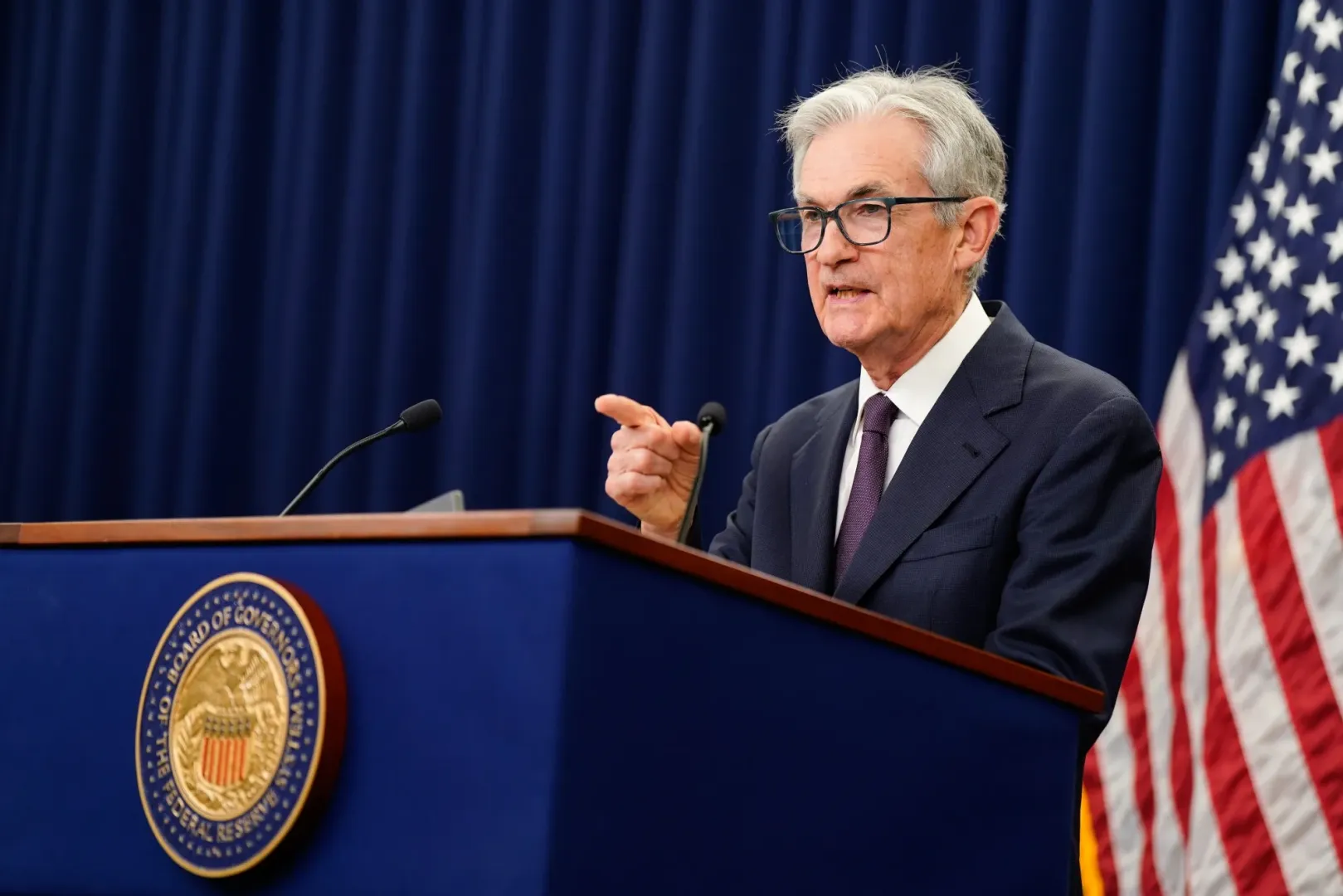The Federal Reserve announced a quarter-point reduction to its benchmark interest rate on Wednesday, bringing the federal funds rate to a range between 3.75% and 4%—the lowest level in three years. However, this latest monetary policy decision was marked by extraordinary complications, including the absence of critical economic data due to an ongoing government shutdown and unprecedented divisions among central bank officials about the appropriate path forward for interest rates.
Build the future you deserve. Get started with our top-tier Online courses: ACCA, HESI A2, ATI TEAS 7, HESI EXIT, NCLEX-RN, NCLEX-PN, and Financial Literacy. Let Serrari Ed guide your path to success. Enroll today.
Historic Dual Dissents Signal Deep Policy Uncertainty
The rate cut decision revealed significant fractures within the Federal Reserve’s policymaking body, drawing two dissenting votes that pulled in opposite directions—a rare occurrence that underscores the exceptional uncertainty facing monetary policymakers in the current environment. Fed Governor Stephen Miran voted in favor of a more aggressive half-point rate cut, while Kansas City Fed President Jeffrey Schmid preferred to maintain borrowing costs at their current level without any reduction.
This marks the first time since 2019 that the Federal Open Market Committee (FOMC) has experienced dueling dissents—with one official advocating for easier monetary policy and another calling for tighter policy—during the same decision. The phenomenon highlights the intense debate raging among Federal Reserve officials over how to interpret and respond to President Donald Trump’s sweeping policy agenda encompassing trade, immigration, and government spending.
The disagreement reflects fundamentally different assessments of the economic landscape. Governor Miran’s call for a larger rate cut suggests concern that the economy may be weakening more rapidly than headline indicators suggest, or that the central bank risks falling behind the curve in providing necessary monetary accommodation. Conversely, President Schmid’s preference to hold rates steady indicates worry that inflation pressures may persist or that premature rate cuts could reignite price increases that the Fed has worked for years to contain.
Navigating Monetary Policy in a Data Blackout
Perhaps the most remarkable aspect of Wednesday’s rate decision is that it was made while Federal Reserve officials lacked access to a full month of crucial government employment statistics. The ongoing federal government shutdown has disrupted the normal flow of economic data from agencies including the Bureau of Labor Statistics and the Bureau of Economic Analysis, depriving policymakers of the objective information they typically rely upon to assess economic conditions.
The data blackout represents the first time in the modern era that the Federal Reserve has been forced to set monetary policy without access to an entire month of federal employment figures—statistics that are typically among the most closely watched indicators for assessing labor market health. The monthly jobs report, which includes data on employment gains, the unemployment rate, and wage growth, normally provides crucial insights into whether the economy is expanding, contracting, or maintaining stability.
Additional missing data likely includes Consumer Price Index figures that measure inflation, Personal Consumption Expenditures data that represents the Fed’s preferred inflation gauge, and various other economic indicators that collectively paint a comprehensive picture of economic health. Without these metrics, Federal Reserve officials are essentially flying blind, forced to rely on alternative data sources, anecdotal reports from regional Fed banks, private sector surveys, and financial market indicators that may provide less reliable or comprehensive information.
Federal Reserve Chair Jerome Powell and his colleagues have emphasized in recent statements that they carefully monitor a wide range of economic indicators beyond government statistics. These include surveys from organizations like the Institute for Supply Management, employment data from private payroll processor ADP, consumer confidence measures from the Conference Board, and real-time indicators of economic activity such as credit card spending data and shipping volumes. However, while these alternative sources provide valuable supplementary information, they cannot fully replace the comprehensive, standardized government datasets that economists and policymakers have relied upon for decades.
The Implications of Trump Administration Policies
The Federal Reserve’s policy deliberations have been further complicated by uncertainty surrounding how President Trump’s economic policy agenda will affect growth, inflation, and employment. The administration has implemented or proposed significant changes across multiple policy dimensions, each with potential implications for monetary policy.
On trade policy, the administration has pursued or threatened tariffs on imports from multiple trading partners, potentially raising prices for consumers and businesses while also potentially protecting certain domestic industries. The inflationary impact of tariffs creates a dilemma for the Federal Reserve: should officials raise rates to combat tariff-induced inflation, even if doing so might harm other sectors of the economy not directly affected by trade policy?
Immigration policy changes represent another source of uncertainty. Restrictions on immigration could tighten labor markets, potentially pushing wages higher and contributing to inflation. However, reduced immigration might also slow overall economic growth by limiting the expansion of the workforce. The Federal Reserve must consider how these competing forces will balance out in determining appropriate monetary policy.
Meanwhile, proposals for significant changes in government spending and tax policy add further complexity. Increased government spending or tax cuts could stimulate economic growth but also potentially increase inflation and widen federal budget deficits. Conversely, spending cuts or tax increases could slow growth but might help contain inflation.
The challenge for Federal Reserve officials is that the magnitude and timing of these policy effects remain highly uncertain. Some proposed policies may never be fully implemented, others may take years to have measurable economic impacts, and the overall effect depends on how various policies interact with each other and with broader economic conditions.
The Federal Reserve’s Dual Mandate
The Federal Reserve operates under a dual mandate established by Congress: to promote maximum employment and stable prices. This framework requires the central bank to balance potentially competing objectives, as policies that boost employment might risk higher inflation, while measures to contain inflation might slow job growth.
Over the past several years, the Fed has navigated extraordinary economic conditions. Following the COVID-19 pandemic, which triggered a sharp economic contraction in 2020, the central bank slashed interest rates to near-zero levels to support the economy. As the economy recovered, inflation surged to levels not seen in four decades, driven by supply chain disruptions, government stimulus payments, and robust consumer demand.
In response to escalating inflation, the Federal Reserve embarked on an aggressive rate-hiking campaign beginning in 2022, ultimately raising the federal funds rate to a range of 5.25% to 5.5%—the highest level in over two decades. These rate increases were designed to cool economic demand, slow inflation, and prevent price increases from becoming permanently embedded in the economy.
The recent rate cuts signal the Fed’s assessment that inflation has sufficiently moderated to allow some easing of monetary policy restraint. However, the decision to cut rates by only a quarter point, rather than the half-point preferred by Governor Miran, suggests most officials believe the economy still requires some degree of monetary restriction to prevent inflation from reaccelerating.
One decision can change your entire career. Take that step with our Online courses in ACCA, HESI A2, ATI TEAS 7, HESI EXIT, NCLEX-RN, NCLEX-PN, and Financial Literacy. Join Serrari Ed and start building your brighter future today.
What Quarter-Point Rate Cuts Mean for Consumers and Businesses
Changes in the federal funds rate ripple through the economy, affecting borrowing costs for consumers, businesses, and governments. When the Fed lowers rates, it becomes cheaper to borrow money, potentially stimulating economic activity by encouraging spending and investment. Conversely, higher rates make borrowing more expensive, which can slow economic growth but also helps contain inflation.
For consumers, lower interest rates typically translate into reduced borrowing costs for mortgages, auto loans, credit cards, and other forms of consumer debt. A quarter-point reduction in the federal funds rate may not dramatically alter monthly payment obligations, but successive rate cuts over time can meaningfully reduce household debt service burdens, freeing up income for other spending or saving.
Businesses also benefit from lower borrowing costs, as reduced interest rates make it less expensive to finance expansion projects, purchase equipment, or manage working capital needs. Lower rates can encourage business investment that might have been postponed when borrowing costs were higher, potentially supporting job creation and economic growth.
However, lower interest rates also reduce returns for savers, as banks typically decrease the interest rates paid on savings accounts, certificates of deposit, and other deposit products when the Fed cuts rates. This creates a challenging environment for retirees and others who depend on interest income, potentially forcing them to take on greater investment risk to achieve desired returns.
Regional Federal Reserve Bank Presidents and Rotating Votes
The Federal Open Market Committee, which sets monetary policy for the United States, consists of the seven members of the Federal Reserve Board of Governors in Washington, D.C., plus five of the twelve regional Federal Reserve Bank presidents on a rotating basis. The presidents of the Federal Reserve Banks of New York, Chicago, Cleveland, San Francisco, Boston, Philadelphia, Richmond, Atlanta, St. Louis, Minneapolis, Dallas, and Kansas City each bring regional economic perspectives to national policy discussions.
Kansas City Fed President Jeffrey Schmid, who dissented in favor of holding rates steady, represents the Federal Reserve Bank of Kansas City, which covers a region including western Missouri, Kansas, Nebraska, Oklahoma, Wyoming, Colorado, and northern New Mexico. His preference to maintain rates may reflect his assessment of economic conditions in this region, which includes significant agricultural, energy, and manufacturing sectors that can be particularly sensitive to interest rate changes.
The regional structure of the Federal Reserve System is designed to ensure that monetary policy decisions incorporate diverse economic perspectives from across the country, rather than being dominated solely by financial markets centered in New York or political considerations from Washington. Regional Fed presidents regularly meet with business leaders, economists, and community representatives in their districts, gathering intelligence about local economic conditions that supplements national economic data.
The Path Forward: December and Beyond
The Federal Reserve offered no clear guidance about its December policy meeting, reflecting the extraordinary uncertainty created by the data blackout and divergent views among officials. If the government shutdown persists and the data blackout continues, central bankers may be forced to pause rate cuts until better information becomes available to assess economic conditions accurately.
Financial markets will closely monitor several key factors in the weeks ahead. First, will the government shutdown end, restoring the flow of economic data? Second, what will alternative economic indicators—including private sector employment reports, consumer spending data, and financial market conditions—suggest about the economy’s trajectory? Third, how will officials’ public comments clarify their thinking about appropriate monetary policy?
The uncertainty facing monetary policymakers extends beyond the immediate data blackout. Structural changes in the economy, including the lasting effects of the pandemic, evolving global supply chains, technological disruption, and demographic shifts, make it challenging to determine what constitutes a “neutral” interest rate that neither stimulates nor restrains economic activity.
International Implications
The Federal Reserve’s decisions reverberate far beyond U.S. borders. As the central bank of the world’s largest economy and the issuer of the global reserve currency, the Fed’s policies significantly influence international financial markets, capital flows, and economic conditions in other countries.
When the Federal Reserve cuts interest rates, it can put downward pressure on the U.S. dollar, making American exports more competitive but also affecting countries whose currencies are pegged to the dollar or whose debt is denominated in dollars. Emerging market economies, in particular, can face challenges when U.S. interest rates change, as capital may flow out of these countries when U.S. rates rise (making dollar-denominated assets more attractive) or flow in when U.S. rates fall.
Central banks around the world, including the European Central Bank, Bank of England, Bank of Japan, and others, must consider Federal Reserve policy decisions in their own monetary policy deliberations. While each central bank responds to conditions in its own economy, in an interconnected global financial system, major central banks’ policies inevitably influence each other.
Conclusion: Unprecedented Challenges Require Careful Navigation
Wednesday’s rate cut decision represents just one chapter in the Federal Reserve’s ongoing effort to guide the U.S. economy through an exceptionally challenging and uncertain period. The combination of a government data blackout, unprecedented policy divisions, and uncertainty about administration economic policies creates a uniquely difficult environment for monetary policymaking.
As Federal Reserve officials look toward their December meeting and beyond, they face the complex task of supporting economic growth and employment while preventing inflation from reaccelerating—all while operating with incomplete information and navigating an unpredictable policy landscape. The dueling dissents in Wednesday’s vote suggest that officials will continue to debate vigorously about the appropriate policy path, with the ultimate direction depending heavily on how economic conditions evolve in the weeks and months ahead.
For now, borrowers can expect some relief from modestly lower interest rates, while savers face the prospect of reduced returns on deposits. Businesses and consumers alike would benefit from a resolution to the government shutdown that restores the flow of economic data, enabling policymakers, market participants, and the public to better assess the health of the world’s largest economy and make more informed decisions about the future.
Ready to take your career to the next level? Join our Online courses: ACCA, HESI A2, ATI TEAS 7 , HESI EXIT , NCLEX – RN and NCLEX – PN, Financial Literacy!🌟 Dive into a world of opportunities and empower yourself for success. Explore more at Serrari Ed and start your exciting journey today! ✨
Track GDP, Inflation and Central Bank rates for top African markets with Serrari’s comparator tool.
See today’s Treasury bonds and Money market funds movement across financial service providers in Kenya, using Serrari’s comparator tools.
Photo source: Google
By: Montel Kamau
Serrari Financial Analyst
30th October, 2025
Article, Financial and News Disclaimer
The Value of a Financial Advisor
While this article offers valuable insights, it is essential to recognize that personal finance can be highly complex and unique to each individual. A financial advisor provides professional expertise and personalized guidance to help you make well-informed decisions tailored to your specific circumstances and goals.
Beyond offering knowledge, a financial advisor serves as a trusted partner to help you stay disciplined, avoid common pitfalls, and remain focused on your long-term objectives. Their perspective and experience can complement your own efforts, enhancing your financial well-being and ensuring a more confident approach to managing your finances.
Disclaimer: This article is for informational purposes only and does not constitute financial advice. Readers are encouraged to consult a licensed financial advisor to obtain guidance specific to their financial situation.
Article and News Disclaimer
The information provided on www.serrarigroup.com is for general informational purposes only. While we strive to keep the information up to date and accurate, we make no representations or warranties of any kind, express or implied, about the completeness, accuracy, reliability, suitability, or availability with respect to the website or the information, products, services, or related graphics contained on the website for any purpose. Any reliance you place on such information is therefore strictly at your own risk.
www.serrarigroup.com is not responsible for any errors or omissions, or for the results obtained from the use of this information. All information on the website is provided on an as-is basis, with no guarantee of completeness, accuracy, timeliness, or of the results obtained from the use of this information, and without warranty of any kind, express or implied, including but not limited to warranties of performance, merchantability, and fitness for a particular purpose.
In no event will www.serrarigroup.com be liable to you or anyone else for any decision made or action taken in reliance on the information provided on the website or for any consequential, special, or similar damages, even if advised of the possibility of such damages.
The articles, news, and information presented on www.serrarigroup.com reflect the opinions of the respective authors and contributors and do not necessarily represent the views of the website or its management. Any views or opinions expressed are solely those of the individual authors and do not represent the website's views or opinions as a whole.
The content on www.serrarigroup.com may include links to external websites, which are provided for convenience and informational purposes only. We have no control over the nature, content, and availability of those sites. The inclusion of any links does not necessarily imply a recommendation or endorsement of the views expressed within them.
Every effort is made to keep the website up and running smoothly. However, www.serrarigroup.com takes no responsibility for, and will not be liable for, the website being temporarily unavailable due to technical issues beyond our control.
Please note that laws, regulations, and information can change rapidly, and we advise you to conduct further research and seek professional advice when necessary.
By using www.serrarigroup.com, you agree to this disclaimer and its terms. If you do not agree with this disclaimer, please do not use the website.
www.serrarigroup.com, reserves the right to update, modify, or remove any part of this disclaimer without prior notice. It is your responsibility to review this disclaimer periodically for changes.
Serrari Group 2025












